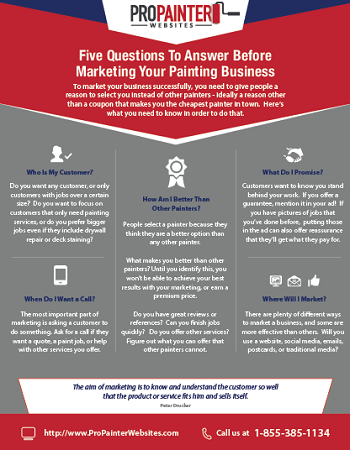Examine The Role Of Seasonal Factors In The Success Of Commercial Outside Paint And Discover The Very Best Times To Secure Long Lasting Results For Your Project
Examine The Role Of Seasonal Factors In The Success Of Commercial Outside Paint And Discover The Very Best Times To Secure Long Lasting Results For Your Project
Blog Article
Post Created By-Carlson Celik
When you're preparing an industrial outside painting job, seasonal elements can make or break your results. You'll wish to take into consideration exactly how temperature and humidity influence paint application and drying out times. Selecting the ideal period can ensure your paint sticks properly and lasts longer. However which go right here are really the most effective for this type of job? Allow's explore the key elements that can affect your job's success.
The Effect of Temperature on Paint Application
When you're preparing an industrial outside paint task, the temperature level can dramatically impact just how well the paint sticks and dries.
Preferably, you want to paint when temperature levels vary between 50 ° F and 85 ° F. If it's too cold, the paint may not cure appropriately, bring about problems like peeling or fracturing.
On the other side, if it's as well warm, the paint can dry out too promptly, avoiding appropriate attachment and resulting in an irregular surface.
You ought to also take into consideration the time of day; morning or late afternoon supplies cooler temperatures, which can be more favorable.
Constantly check the supplier's suggestions for the certain paint you're utilizing, as they frequently give advice on the perfect temperature level array for ideal results.
Moisture and Its Effect on Drying Times
Temperature level isn't the only environmental element that affects your industrial outside painting project; humidity plays a significant function as well. High moisture levels can reduce drying out times drastically, influencing the total top quality of your paint work.
When the air is filled with moisture, the paint takes longer to treat, which can result in problems like poor attachment and a higher risk of mold development. If you're painting on a specifically humid day, be planned for extensive wait times between coats.
It's critical to check regional weather conditions and strategy as necessary. Ideally, st. louis park exterior painter for humidity levels in between 40% and 70% for optimal drying out.
Maintaining just click the next website page in mind guarantees your task stays on track and provides an enduring surface.
Best Seasons for Commercial Exterior Paint Projects
What's the most effective time of year for your business exterior paint projects?
Springtime and very early fall are usually your best bets. During these periods, temperatures are moderate, and moisture degrees are typically reduced, creating ideal problems for paint application and drying.
Prevent summertime's intense heat, which can cause paint to dry also quickly, causing poor adhesion and surface. In a similar way, winter season's cold temperature levels can hinder appropriate drying and treating, risking the durability of your paint work.
Aim for days with temperature levels between 50 ° F and 85 ° F for optimal results. Bear in mind to inspect the local weather prediction for rain, as damp problems can wreck your project.
Preparation around these aspects ensures your paint project runs efficiently and lasts much longer.
Verdict
Finally, preparing your industrial external painting jobs around seasonal factors to consider can make a significant distinction in the result. By scheduling work throughout the ideal temperatures and humidity degrees, you'll make certain better bond and drying times. Keep in mind to watch on neighborhood weather report and pick the right time of year-- spring and very early fall are your best choices. Taking these steps will assist you achieve a durable and expert finish that lasts.
